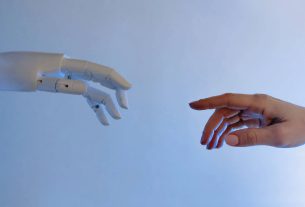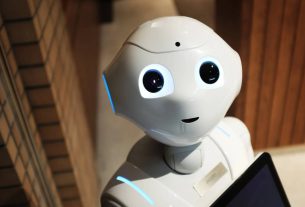Artificial Intelligence (AI) is one of the most exciting fields in technology today, and Machine Learning (ML) is an important part of it. In simple terms, machine learning is a way of teaching computers to learn from data and make predictions or decisions based on that data.
Machine learning is used in many applications, from image and speech recognition to self-driving cars and financial analysis. In this article, we will explore the basics of machine learning, without getting too technical or complex.
The first step in understanding machine learning is to understand the concept of data. Machine learning algorithms learn from data, which can be anything from images and videos to numbers and text. The data is used to train the machine learning algorithm to recognize patterns and make predictions.
The next step is to understand the different types of machine learning. There are three main types of machine learning: supervised learning, unsupervised learning, and reinforcement learning.
Supervised learning is the most common type of machine learning. In supervised learning, the algorithm is given labeled data to learn from. The data includes both the inputs and the outputs, and the algorithm tries to learn the relationship between them. For example, an algorithm might be given a dataset of images of dogs and cats, with labels indicating which is which. The algorithm would then learn to recognize the difference between dogs and cats.
Unsupervised learning is when the algorithm is given unlabeled data to learn from. The algorithm must find patterns in the data on its own, without any guidance. For example, an unsupervised learning algorithm might be given a dataset of images and be asked to group similar images together.
Reinforcement learning is when the algorithm is given a goal to achieve and then learns from its own experiences as it tries to achieve that goal. The algorithm receives feedback in the form of rewards or punishments, which it uses to adjust its behavior. For example, a reinforcement learning algorithm might be used to train a robot to navigate a maze. The robot would receive rewards for reaching the end of the maze and punishments for hitting a wall.
Finally, it’s important to understand that machine learning is not perfect. Machine learning algorithms can make mistakes, just like humans can. In fact, the accuracy of a machine learning algorithm is directly related to the quality and quantity of the data it is trained on. If the data is biased or incomplete, the algorithm’s predictions may be inaccurate.
In conclusion, machine learning is a way of teaching computers to learn from data and make predictions or decisions based on that data. There are three main types of machine learning: supervised learning, unsupervised learning, and reinforcement learning. Machine learning is not perfect and can make mistakes, but it is an exciting field with many applications in our daily lives. With a better understanding of the basics of machine learning, we can appreciate the many ways in which it is already making our lives easier and more convenient.





